
Word Count: 6214
(Note: This resource's metadata has been created automatically by reformatting and/or combining the information that the author initially provided as part of a bulk import process.)


Word Count: 6214
(Note: This resource's metadata has been created automatically by reformatting and/or combining the information that the author initially provided as part of a bulk import process.)
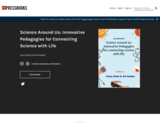
Science around us: Innovative Pedagogies for connecting science with life”, a pioneering exploration into cutting edge science teaching approaches that revolutionize the learning experiences. The groundbreaking book delves into the dynamic intersection of science and pedagogy, offering fresh perspectives, creative strategies, and transformative methodologies that inspire curiosity, critical thinking, and a deep appreciation for the wonders of the scientific world. Explore engaging teaching methodologies, inspiring case studies, and practical applications that will revolutionize the way we learn and engage with science. This book serves as a beacon for educators, students, parents and enthusiasts alike, illuminating a path towards a more vibrant and interactive approach to learning and experiencing in all its splendor. Join us as we embark on a quest to redefine science education through innovation, engagement, and empowerment.
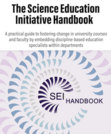
A practical guide to fostering change in university courses and faculty by embedding discipline-based education specialists within departments.
Long Description:
This Handbook is based on the Science Education Initiative (SEI), a transformative initiative aimed at changing STEM teaching practices in university settings. The SEI was successfully implemented in two institutions (University of Colorado Boulder and The University of British Columbia) over a period of 10 years. The SEI centered on department-based Discipline-Based Education Specialists (DBESs), disciplinary experts with training in the science of teaching and learning who serve as catalysts of change within departments. The two SEIs have influenced the teaching of hundreds of faculty and the learning of tens of thousands of students per year by promoting the use of evidence-based teaching practices in STEM. These teaching practices are informed by research on teaching and learning, and often include some element of active learning.
This Handbook shares the accumulated wisdom of practice in how to effectively implement a model of change based on the SEI. It provides advice to the three main stakeholders in such initiatives: the initiative leaders who provide central direction and management, the departmental leaders who help lead the activities and engage faculty, and the Discipline-Based Education Specialists who partner with faculty to transform courses.
Word Count: 65685
(Note: This resource's metadata has been created automatically by reformatting and/or combining the information that the author initially provided as part of a bulk import process.)

Word Count: 9199
(Note: This resource's metadata has been created automatically by reformatting and/or combining the information that the author initially provided as part of a bulk import process.)

Short Description:
A booklet prepared for teachers that introduces key concepts from the Science of Learning (i.e. cognitive neuroscience). The digital booklet is the result of a European project. Its content have been compiled from continuing professional development workshops for teachers and features evidence-based teaching practices that align with our knowledge of the Science of Learning.
Long Description:
Science of Learning Concepts for Teachers (Project Illuminated) introduces teachers to key concepts from the Science of Learning (i.e. cognitive neuroscience). The digital booklet is the result of a European project. Its content has been compiled from continuing professional development workshops for teachers and features evidence-based teaching practices that align with our knowledge of the Science of Learning.
The digital booklet is available in English, Spanish, Finish, Greek, and Portuguese.
Please cite as: Beardsley, M. 2020. Science of Learning Concepts for Teachers (Project Illuminated) (1st ed.). Retrieved from https://illuminated.pressbooks.com/
Word Count: 18707
(Note: This resource's metadata has been created automatically by reformatting and/or combining the information that the author initially provided as part of a bulk import process.)

Perspectives of International Educators on its Curriculum and Implementation Potential
Short Description:
This book is based on a study on the perspectives of international educators at five respective universities in five countries. The aim of the study is to establish the readiness of instructors to implement seamless learning as part of their curriculum. A clarification about the challenges and successes is compiled through this study and will be useful for policy makers in their respective environments.
Long Description:
This book is based on a study on the perspectives of international educators at five respective universities in five countries. The aim of the study is to establish the readiness of educators to implement seamless learning as part of their curriculum. A clarification about the challenges and successes is compiled through this study and will be useful for policy makers in their respective environments.
The target audience of this book on seamless learning includes educators, curriculum developers, decision makers and policy developers in higher education that are interested in the implementation of seamless learning in their environment. The study can be repeated to establish the readiness of a university by following the examples in this book. For assistance in similar studies the Global research team of the International Association for Mobile Learning can be contacted.
DOWNLOAD FORMATS
Word Count: 46381
(Note: This resource's metadata has been created automatically by reformatting and/or combining the information that the author initially provided as part of a bulk import process.)

Comparisons from International Educators on Changes During a Global Pandemic
Short Description:
The second book on Seamless Learning in Higher Education is a compilation of detailed descriptions and comparisons of educators designing and teaching courses from 10 countries where identified courses before and during COVID-19 are analyzed based on the Seamless Learning Experience Design (SLED) framework. The book is intended as a clarification for the identified concepts within the SLED model and as a demonstration of improving quality education in learning environments where technology is ample and available as well as in learning environments with minimal technology resources. The book provides rich information that will support educators, instructional designers, and management alike to improve their approach toward the continuous changes in the education landscape.
Long Description:
The second book on Seamless Learning in Higher Education is a compilation of detailed descriptions and comparisons of educators designing and teaching courses from 10 countries where identified courses before and during COVID-19 are analyzed based on the Seamless Learning Experience Design (SLED) framework. The book is intended as a clarification for the identified concepts within the SLED model and as a demonstration of improving quality education in learning environments where technology is ample and available as well as in learning environments with minimal technology resources. The book provides rich information that will support educators, instructional designers, and management alike to improve their approach toward the continuous changes in the education landscape.
The target audience of this book on seamless learning includes educators, curriculum developers, decision makers and policy developers in higher education that are interested in the implementation of seamless learning in their environment. The study can be repeated to establish the readiness of a university by following the examples in this book. For assistance in similar studies the Global research team of the International Association for Mobile Learning can be contacted.
DOWNLOAD FORMATS
Word Count: 65480
ISBN: 978-1-9993825-6-8
(Note: This resource's metadata has been created automatically by reformatting and/or combining the information that the author initially provided as part of a bulk import process.)
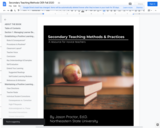
Textbook created for novice teacher development.

A reference for writing and self-publishing an open textbook
Short Description:
The BCcampus Open Education Self-Publishing Guide is a reference for individuals or groups wanting to write and self-publish an open textbook. This guide provides details on the preparation, planning, writing, publication, and maintenance of an open textbook.
Long Description:
The BCcampus Open Education Self-Publishing Guide is a reference for individuals or groups wanting to write and self-publish an open textbook.This guide provides details on the preparation, planning, writing, publication, and maintenance of an open textbook. Copyright, open-copyright licences, and the differences between citation and attribution are discussed as well as the importance of copy editing and proofreading. Checklists and templates are also provided. This guide replaces the BCcampus Open Education Authoring Guide.
Word Count: 41561
(Note: This resource's metadata has been created automatically by reformatting and/or combining the information that the author initially provided as part of a bulk import process.)

Word Count: 11456
Included H5P activities: 10
(Note: This resource's metadata has been created automatically by reformatting and/or combining the information that the author initially provided as part of a bulk import process.)

This edited volume highlights how institutions, programs, and less commonly taught language (LCTL) instructors can collaborate and think across institutional boundaries, bringing together voices representing different approaches to LCTL sharing to highlight affordances and challenges across institutions in this collection of essays. Sharing Less Commonly Taught Languages in Higher Education showcases how innovation and reform can make LCTL programs and courses more attractive to students whose interests and needs might be overlooked in traditional language programs. The volume focuses on how institutions, programs, and LCTL instructors can work together, collaborating and thinking across institutional boundaries to explore innovative solutions for offering a wider range of languages and levels.
With challenges including instructor isolation, difficulty in offering advanced courses or sustaining course sequences, and minimal availability of pedagogical materials compared to commonly taught languages to overcome, this collection is a vital resource for language educators and language program administrators.
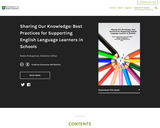
To complete the course ECUR 415.3: Current Issues in EAL, students are required to submit a final paper that reflects their growing knowledge about English as an Additional Language (EAL). EAL is the term used in Saskatchewan to describe students who speak languages other than English and require adequate levels of English to be successful with the school curriculum.
Most students enrolled in the online course ECUR 415 are practicing teachers who are working toward a Post-Degree Certificate in EAL Education (PDCEAL), while continuing to live and work in various locations both within and outside of the province. The certificate program, offered through the College of Education, University of Saskatchewan, is recognized by provincial education authorities as being equivalent to one full year of post-degree study. As such, the certificate equips teachers with the knowledge and expertise to be considered teacher-specialists of EAL Education. The course ECUR 415 also attracts some pre-service teachers who are pursuing a Bachelor of Education degree and have an interest in EAL Education.
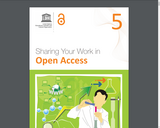
This is the last Module of the course on Open Access for researchers. So far you have studied about Open Access, its history, advantages, initiatives, copyrights and licensing, evaluation matrix for research – all in the context of scholarly communication. In this Module with just two units, we would like to help you share your work in Open Access though repositories and journals. At the end of this module, you are expected to be able to:
- Understand the publication process involved in dissemination of scholarly works;
- Choose appropriate Open Access journals and repositories for sharing research results;
- Use social media to promote personal research work and build reputation.
In Unit 1, we discuss the research publication process at five stages – planning stage, preparing stage, pre-publication stage, publication stage and postpublication stage. We emphasize the importance of social media in sharing and making your work visible to the target groups.
In Unit 2, we focus on sharing your research through OA repositories and Journals. First we discussed the different types of repositories to select and highlighted the steps that you may consider including deposit in your own institutional repositories or in global open repositories. We then discuss the sources of finding and deciding on OA journals. This unit also provides guidance on choosing the right OA journals, as the quality of OA journals is often questioned.
This is Module Five of the UNESCO's Open Access Curriculum for Researchers.
Full-Text is available at http://unesdoc.unesco.org/images/0023/002322/232211E.pdf
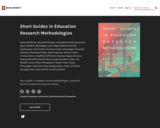
Short Description:
Short guides in common research methodologies, created by doctoral students for doctoral students.
Word Count: 29950
(Note: This resource's metadata has been created automatically by reformatting and/or combining the information that the author initially provided as part of a bulk import process.)

Word Count: 30922
(Note: This resource's metadata has been created automatically by reformatting and/or combining the information that the author initially provided as part of a bulk import process.)

2020-2021 Edition
Word Count: 7204
(Note: This resource's metadata has been created automatically as part of a bulk import process by reformatting and/or combining the information that the author initially provided. As a result, there may be errors in formatting.)

Social Emotional Learning is considered the most important topic in Education.

Lesson plans for the junior-intermediate classroom
Word Count: 79522
(Note: This resource's metadata has been created automatically by reformatting and/or combining the information that the author initially provided as part of a bulk import process.)
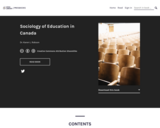
Long Description:
Sociology of Education in Canada utilizes a contemporary theoretical focus to analyze how education in Canada is affected by pre-existing and persistent inequalities among members of society. It presents the historical and cultural factors that have shaped our current education system, examines the larger social trends that have contributed to present problems, discusses the various interest groups involved, and analyzes the larger social discourses that influence any discussion of these issues.
To achieve this, Karen L. Robson uses many current, topical, and relatable issues in Canadian education to ensure that students fully comprehend the information being presented and leave with an appreciation of how the sociology of education is inextricably linked to issues of stratification.
Word Count: 143501
(Note: This resource's metadata has been created automatically by reformatting and/or combining the information that the author initially provided as part of a bulk import process.)

An open educational text written by McBride.